
PR
Seven Wonders of Tojirefers to the non-opening gate, the descending stone, the anamon gate, the treasure house, the lotus gate, the gourd pond, and the cat's bend.
Introduced in this issueThe Cat's Bend."was located at the southeast corner of the Tsukiji wall that surrounded the Toji temple grounds. Prior to the Edo period,Cats are expensive animals that only nobles and priests can keep.It was. However, during the Edo period, the number of cats increased and they were cute to look at,The number of people who keep them among the general public has skyrocketed.The cats were the most common source of food for the silkworm farmers. Especially in sericultural farms, cats would catch rats.divine beastsThey have been revered and cherished as However, as the number of cat owners increased, the number of cat pups naturally increased as well. As a result, the cats suffered as well. An increasing number of owners abandoned their cats because they could not keep them any longer.
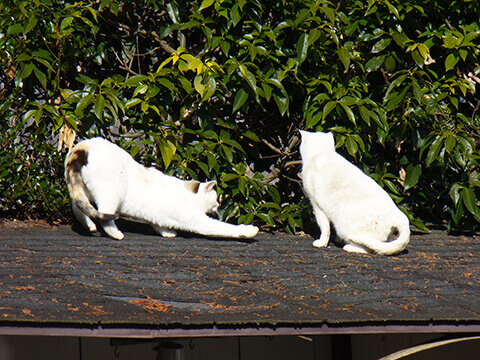
Cat on the roof I met while walking
It is commonly said that "dogs follow the man, but cats follow the house. Cats will return to their homes soon after they are abandoned, so it is best to abandon them as far away from home as possible so that they cannot return. The "cat dumping ground" was created because it was thought that if cats were dumped around the corner of Toji Temple, the southernmost point of the capital, they would not be able to return to their homes. The area became known as "Neko no Tsuji" (cat's street) or "Neko no Kendori" (cat's bend).
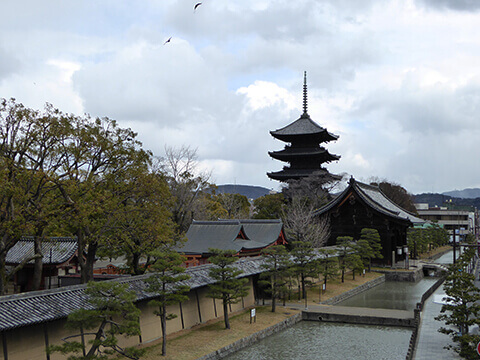
Five-story pagoda and moat of Toji Temple
According to one theory, until the first year of Meiji Era (1868), a white tiger was placed here as a tomehidawara. The white tiger's face was so frail that it looked as if it were aSkinny cat faceIt is also said that the name "cat's bend" came about because people ridiculed it as a "cat's bend".
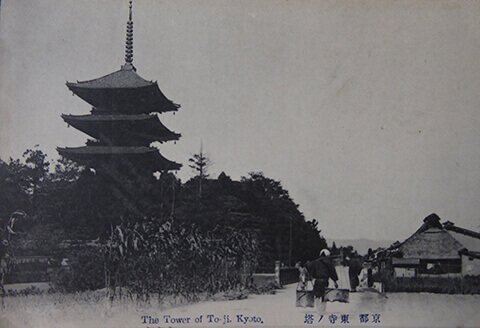
Southeast corner of Toji Temple "Cat's Bend
Postcards issued between April 1907 and March 1918
In the Edo period (1603-1867), the area around the southern corner of To-ji Temple was always haunted by starving, emaciated stray cats, which were regarded as creepy because they mewed in a weird voice. It must have been a nuisance for the cats to be treated as gods, only to be abandoned because they could not be raised, and then to be treated as creepy because of people's selfishness.
According to the report, until the middle of the Meiji period (1868-1912), the area was dark even in the daytime because of the thick moat and bamboo thickets, and it was said that there were reportedly marauders in the area,A magical place feared by the people of KyotoBut it was also there. Until the Showa period (1926-1989), it was customary not to pass through a cat's path during weddings and other important ceremonies. In the old days, it was not only cats, but also dogs andWorn-out tools were also thrown away there.I also heard that "the tools of the trade" are said to have become mourning gods and to taunt people. Tools discarded by people are said to have become gods of mourning and to taunt people, which probably made them even more eerie.
However, the Koboichi (antique market), held on the 21st of the month on the Toji temple grounds, is still thriving,Many people come here to enjoy buying old tools.It is also a strange fate.
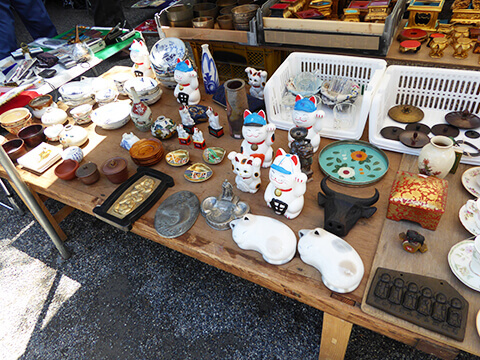
Cat figurines sold at Koboichi
When I went to the place where the cat bend was located the other day, I was disappointed that I could not see it because it was covered with a sheet for the construction of the Tsukiji wall.
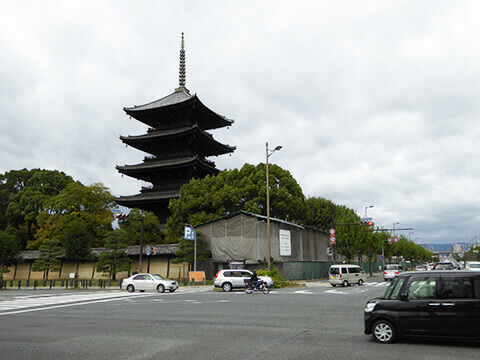
Current southeast corner of Toji Temple (under construction)
By the way, recently I have not seen any cats in the parks I often pass by. Perhaps it is because they are no longer fed by the city of Kyoto's no-feeding ordinance. Where have all the cats gone that have disappeared from people's sphere of life?
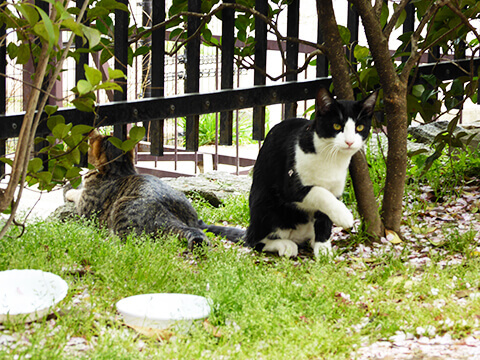
Cat I met while walking
A hangout for cats that have nowhere else to go, "The Bend of the Modern Catmay have been born somewhere, quietly, at .......
Tradition that exists everywhere in the city of Kyoto. It is not just a picture, it is secretly alive in this modern age and continues to coexist with people. The two of Office TO, who previously wrote a series of articles "Kyoto's Demon World Exploration" in the monthly magazine Leaf, explore the mysterious "different" world of Kyoto, which was created over 1200 years. I will unravel the story while actually visiting the place. .
 News
News Feature article
Feature article Featured event
Featured event